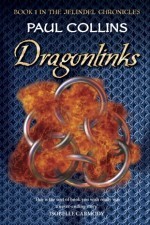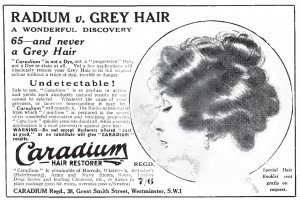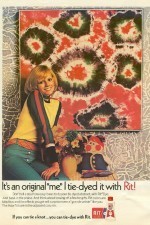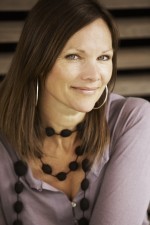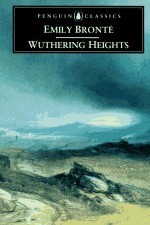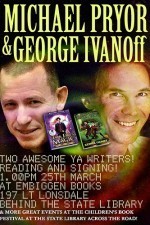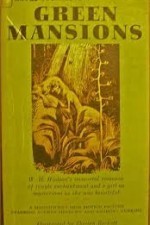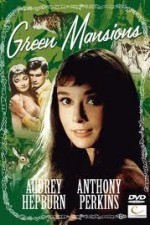Michael Pryor's Blog, page 22
April 12, 2012
Guest Post – Paul Collins
Today’s guest post is a step to the side of the ongoing ‘My Favourite Book’ series. Today, it’s Paul Collins talking about Fantasy writing and the Hero’s Journey.
The most popular (read notorious) question authors get asked is: ‘Where do you get your ideas?’ I built a workshop around this theme to satisfy that question. But how to explain where ideas for fantasy novels come from? I pondered this aspect and realised that the 12 point structure of fantasy is as good a place as any to explain how authors writer humongous tomes. Yes, imagination features heavily, but once students answer the fundamental questions as espoused by the 12 points, they’re well on their way to writing their own fantasy novels. I then built a workshop around that particular theme, too.
So this is how it all works:
Our hero’s journey proceeds in stages ─ leaping from their Ordinary World out into the unknown. Eventually, they find their way back home again. During the course of the journey, our hero makes friends and meets foes who help or hinder the rite of passage: this refers to a stage in the journey of life, one that’s difficult and often traumatic, but will affect everything that comes after. The most significant rite-of-passage for humans is the transition from childhood\adolescence into adulthood. Many fantasy stories attempt to emulate this journey (think Star Wars with its adolescent hero). This process is universal and happens to us all. We leave home; this is sometimes scary or exciting and can be both. We leave our ordinary world – our comfort zone, the world of our familiar childhood – to venture out into the unknown, referred to in the ‘structure’ as the Special World. In smaller ways, this journey is repeated again and again throughout our lives. This mythic journey is the underlying structure of most successful fantasy plots.
We kick off our fantasy novel in . . .
1. THE ORDINARY WORLD
This is where our story begins, the world in which the character (they’re not a hero yet!) feels comfortable, which is familiar to them. It’s also the world they are usually reluctant to leave. Frodo hates the thought of leaving the shire and is scared to do so, even though he is also excited at the same time. Cinderella’s ordinary life is spent cleaning up after her step-mother and step-sisters. Her special world is the Ball. Harry Potter and the Philospher’s Stone: Harry’s is a life of unhappy drudgery with his aunt, uncle and cousin. His special world is Hogwarts. The Wizard of Oz: Dorothy lives with her uncle and aunt on a farm. Her special world is The Land of Oz. Jelindel, in book #1 of my own series The Jelindel Chronicles, Dragonlinks, is anticipating a feast and playing. Her world is safe and, to her, ‘normal’.
Taking the character from their familiar world to an alien one disorients them and makes them vulnerable and adds to the drama of the situation.
2. THE CALL TO ADVENTURE
This is a challenge or a problem that the character can’t ignore. They are compelled to leave the ordinary world, to leave comfort and safety behind. In Star Wars, the call is Princess Leia’s holographic message to Obiwan that Luke Skywalker overhears. In Lord of the Rings, the problem that can’t be ignored ─ that can’t be hidden or destroyed ─ is the ring itself. Here Frodo ─ the keeper of the ring ─ is forced onto the first leg of his journey (not knowing where it will end). Cinderella is invited to the ball; Harry gets a flood of letters in the mail. Dorothy’s dog Toto runs off and Dorothy gives chase. Jelindel is driven from her home by assassins and the subsequent fire and must survive on the streets of D’Loom. This is the first call. The second call is when she and her companions are forced to flee D’Loom.
3. REFUSAL TO THE CALL TO ADVENTURE
The hero isn’t quite a hero yet (he/she becomes one by going on the journey) and they’re quite rightly scared to leave the known and familiar world, or to leave a lesser evil for what might be a greater one. So they refuse or drag their feet or declare their reluctance or happily sleep in like Bilbo in The Hobbit. Luke in Star Wars refuses and actually goes home but then discovers his family has been murdered. Frodo begs Gandalf for time and expresses reluctance. Our protagonist resists the call. Cinderella says, ‘But I haven’t got anything to wear!’ Harry, with a twist to the theme, doesn’t refuse the call to adventure; the Dursleys do it for him. Dorothy runs away from home because she doesn’t want to grow up. Everything has been destroyed so Jelindel has no reason to refuse. She needs the adventure on some level ─ to come into her own.
Again, this is something that every reader and viewer can relate to. The universal fear of the unknown.
4. THE MENTOR (THE WISE OLD MAN OR WOMAN)
This is one of the most important roles in the story and one that occurs early. A wise old man or woman ─ Merlin, Gandalf, Obiwan, Glinda the Good Witch in The Wizard of Oz ─ is introduced and offers the hero guidance and help for the journey and often gives them some powerful or magical device (Obiwan gives Luke his father’s light sabre; Cinderella’s fairy godmother sends her to the Ball. Hagrid is Harry’s mentor (Dumbledore is often mistaken as Harry’s mentor). Hagrid tells Harry that he’s a wizard and takes him shopping for supplies. Professor Marvel tells Dorothy she is loved and sends her off to find home. Glinda gives Dorothy the ruby slippers that will later get her home again) Jelindel meets Zimak who teaches her kick-fist. The spells at the Temple of verity also help her. Zimak is also a trickster, an archetype found in fantasy.
The mentor’s main aim is to give our future heroes good advice – which the hero sometimes ignores, to their near peril. This relationship between hero and mentor represents a fundamental and universal relationship in human societies and human history: that between parent and child, teacher and student, the old and the new, the past and the future (and how to bridge them). Often the Mentor may be combined with another role, that of getting the Hero started on his/her journey, of bolstering their courage or simply by putting the fear of God into them at what will happen if they don’t undertake the adventure. The Mentor usually doesn’t complete the journey with the Hero since they must do this on their own, proving themselves by doing so.
5. CROSSING THE FIRST THRESHOLD (boundary)
This is the first step upon the road the hero must embark upon. It may take the form of setting out on the journey or dealing with the problem in some fashion (though it will turn out not to be a final solution and the problem will usually return but by this time it will be much bigger and more dangerous).
Luke goes with Obiwan to Mos Eisley and Frodo leaves the Shire. Cinderella travels to the Ball in her magical pumpkin carriage Harry passes through the brick wall at Platform 9 ¾ and steps into the wizard world via the Hogwarts Express. Dorothy travels to Oz via a tornado. Jelindel crosses this boundary when she decides to go after the dragonlinks.
The story now enters a new territory. Here, old skills or knowledge may no longer be useful but fundamentals such as loyalty, bravery and integrity will prove to be lifesavers.
6. TESTS, ALLIES & ENEMIES
The Hero meets difficulties that test his or her strength and commitment. At this point they are usually not huge tests, but they will grow as the journey develops. In the process they will also enlist the help of allies (who may become permanent companions) and they may make enemies. Frodo ─ along with Sam, Pippin and Merry ─ have their first near misses with the dreaded Black Riders and only narrowly escape them. In the process Frodo is strongly tempted to put on the ring, an action that would bring instant doom to him and his companions, but he manages to pass this test. Cinderella’s enemies are her ‘family’, and an unexpected ally is the fairy godmother and prince. Part of her test is not being recognised by her hateful step-mother and step-sisters and in not becoming so caught up in all the wonder and riches of the Ball that she forgets the time. Harry’s news friends are Ron and Hermione; his enemies are Malfoy, Goyle and Crabbe ─ although these are underlings to Harry’s main foe, Lord Voldemort. His tests are many: the sorting hat, moving stairways, Quidditch. Dorothy makes friends with the Scarecrow and Tinman, and later the lion and learns of the Wicked Witch. Jelindel survives various dangers and adversaries, learns more about her companions, becoming friends to some extent, and finds the map to the other links.
This is also the section where we start to learn about the Hero (and their companions and adversaries) by seeing how they deal with the challenges and tests (such as the fights and negotiations in the cantina in Star Wars). This section may take up a large part of the book or the film.
7. APPROACH TO THE INMOST CAVE
The Hero approaches the most dangerous place in the story (keep in mind that this sequence of crossing a threshold, undergoing tests, making allies and enemies, and approaching a very dangerous place may be run over and over again, each time increasing in deadliness and difficulty). The hero makes plans or preparations here, often girding him or herself for what is ahead. Here Luke approaches the Death Star and Frodo approaches Mordor (this is the biggest and deadliest ‘inmost cave’ in LOTR; there are many others on the way of course). Cinderella is scared to meet the prince, and also scared when she falls in love with him. Harry must study hard, learn to fly a broomstick, and decide whether to break Hogwarts rules. Dorothy and her friends approach the Emerald City. Jelindel must go to the Valley of Clouds and fight paraworld beasts to find the next link. Someone tries to kill her.
8. THE SUPREME ORDEAL
Here the Hero risks death, risks failure, risks losing everything ─ often not just for themselves but for their world as well. It usually also brings the Hero to their lowest darkest moment in the story, when everything appears to be over due to their apparent failure, and they cannot go on. They must give up. But they don’t. However, this is also where the Hero undergoes a real or symbolic death (or ‘shares’ in one, as Elliot does in E.T. when his alien friend dies). This allows the Hero to be reborn, an important part of the mythical story. In LOTR, Frodo and Sam enter Mordor ─ the most dangerous place in Middle Earth ─ and Frodo ‘dies’ after being stung by the great spider, Shelob. He is then reborn in time to carry out the final part of the quest. Cinderella must escape from the ball before she turns back to her former self. Harry must defeat the fearsome troll, and partake in his first Quidditch match. Dorothy has to confront the Wicked Witch, enraged at the loss of her ruby slippers. Jelindel faces a paraworld beast much more powerful than she is and one who is intent on killing her. She nearly dies. A demon saves her life.
9. REWARD (SEIZING THE SWORD)
The Hero ─ through bravery, loyalty and determination ─ wins through and obtains the treasure, which may be a magical object such as a gem, a sword, a suit of armour, or sometimes special knowledge or power or ─ as in LOTR with a twist on the fairy story ─ is the destruction of the object that is too powerful and too perilous to keep. Cinderella learns that the prince is in love and will marry the woman whose foot fits the lost slipper. Harry is rewarded with Hermione’s friendship and becomes popular when he wins the Quidditch match against Slitherin. After some difficulty, Dorothy persuades the Wizard to grant all their wishes. The demon that saved Jelindel’s life tells her how to use the power of the link without dissipating it. She also finds a flying craft.
By the Hero’s action the world is saved, especially the Ordinary World from where they started.
10. THE ROAD BACK
In many stories the road back is almost as dangerous as the one coming. Sometimes the dark forces chase the Hero for some way as Darth Vader goes after Luke when the Death Star has been destroyed. Frodo’s road back isn’t just the return to the Shire, which is fairly uneventful, but it’s also what happens when he gets there. Cinderella doesn’t think her step-sisters will let the prince anywhere near her and she’ll have to stay in the ordinary world. Harry’s home is now Hogwarts. But he must face a dangerous journey through the Forbidden Forest. Dorothy goes looking for her way back to Kansas when the Wizard’s hot-air balloon takes off with him in it. Jelindel battles Korok, an alien, and his deadly spacecraft. She must then deal with Daretor and Zimak, who pose a threat of another kind.
11. RESURRECTION
Usually there is a final struggle when the Hero returns to the Ordinary World (or is on the border of it). It can be nearly as dark and deadly as what took place in the Supreme Ordeal and can be seen as a smaller version of that challenge. It’s as if darkness has not been fully vanquished yet and whatever residue of it remains in the world is intent on having one last go. Cinderella tries on the glass slipper that fits. She and the prince fall in love. Harry gets past Fluffy, the three-headed dog, and outwits the flying keys and plays a deadly game of wizard chess in order to stop Voldemort getting the philosopher’s stone, but he’s struck down and seems to die. Dorothy’s greatest danger has already passed when she took on the Wicked Witch, but her own symbolic death occurs when she wakes in Kansas from a death-like sleep. Jelindel has one final battle with the almost omnipotent mailshirt entity, and nearly loses, but narrowly manages to stop it winning.
This stage reminds me of horror movies where the heroes embrace one another, say on the boat in Anaconda, after the villain has been knocked on the head and dumped overboard. Just when you think it’s all over, the villain’s hand leaps from the water, he drags himself back on board, and the fight resumes as though the villain never received an injury.
12. RETURN WITH THE ELIXIR/TREASURE
The Hero comes home ─ though ‘home’ may have changed due to what has happened throughout the story and in the resurrection stage. With them, the Hero brings back the treasure, the elixir, the magical device, the special knowledge that is needed, or restores peace (for the time being) as in Star Wars. [The elixir may also be love, freedom, wisdom, etc.] In LOTR, Frodo brings back an ‘absence’ ─ the ring has been destroyed. This absence is symbolised by his missing finger, bitten off by Gollum who then fell into the furnaces of Mount Doom with it. By his struggles Frodo has saved Middle Earth and his beloved Shire, though not for himself and it is a bittersweet ending for him. Cinderella marries her prince and lives happily ever after, no longer a lowly servant. Harry wakes in hospital and is a hero. He now knows that his parents had loved him, and returns ‘home’ with photos of them. Dorothy learns that home is where it always was, in Kansas with her Aunt Em who really does love her. Like Frodo, Jelindel has saved the world from a terrible evil, but at great cost to herself and others. She has lost her family and had to grow up really fast. She cares about her companions but banishes them to a paraworld. It’s the best choice she can make at that time.
In summary:
1) Heroes are introduced in the ORDINARY WORLD, where
2) they receive the CALL TO ADVENTURE
3) They are RELUCTANT at first or REFUSE THE CALL, but
4) are encouraged by a MENTOR (taking on the added role of the HERALD) to
5) CROSS THE FIRST THRESHOLD and enter the Special World where
6) they encounter TESTS, ALLIES AND ENEMIES
7) They APPROACH THE INMOST CAVE, crossing a second threshold
 where they endure the SUPREME ORDEAL.
where they endure the SUPREME ORDEAL.
9) They take possession of their REWARD and
10) are pursued on THE ROAD BACK to the Ordinary World.
11) They cross the third threshold, experience a RESURRECTION, and are transformed by the experience.
12) They RETURN WITH THE ELIXIR, a boon or treasure to benefit the Ordinary World.
Not all of these stages occur in every fantasy novel but they generally appear in this order (even if some are left out). The approach to the inmost cave and the subsequent facing of the ‘supreme’ ordeal is a sequence that occurs several times, growing in significance and danger each time, until the ultimate ‘supreme’ ordeal is reached (it may be worth thinking of the earlier confrontations just as ordeals, though each one is worse than the one before).
Paul’s many books for young people include series such as ‘The Jelindel Chronicles’, ‘The Earthborn Wars’, ‘The Quentaris Chronicles’ and ‘The World of Grrym’ in collaboration with Danny Willis. His latest book is ‘Mole Hunt’, book one in The Maximus Black Files. The trailers are available here: http://www.youtube.com/watch?v=3S-eKD... and http://www.youtube.com/watch?v=n4tTn_WXCiw.
Paul has been the recipient of the A Bertram Chandler, Aurealis, William Atheling and Peter McNamara awards and has been shortlisted for many others including the Speech Pathology, Mary Grant Bruce, Ditmar and Chronos awards. For more, go to www.paulcollins.com.au
April 11, 2012
A Splendid 1920s Advertisement
April 9, 2012
1971 – The Giant Alien Amoebae Are Coming To Get Us
Ah, 1971, what a year! Even though it was technically well inside a new decade, the spirit of the previous ten year was unwilling to die. In some ways, the early seventies were the culmination of the Sixties, in music, fashion and culture. And in good taste, of course.
Take this advertisement for Rit dye. There's so much to love here! Look at the astonishing colour combination she's wearing. Look at her belt, which looks as if it's made of macrame pasta. Look at the empty-eyed doll on the table, pre-flattened so it can slip under your bedroom door at night and haunt your dreams. Look at the wallpaper – can you imagine a whole room done up with that pattern? Black Ops teams are probably studying it right now to see if it can be used in psychological warfare.
And then there's the art that's on the wall, the art she's so proud of. Yes, that's tie dye. Everyone was doing it in 1971. Tie dyed jeans, tie dyed shirts, tie dyed sheets. But tie dyed art? I can imagine being at a dinner party in 1971, tucking into my French Onion soup and getting ready for a main course of Steak Diane, then glancing up at the wall to see that art in all its hideous power. All thought of polishing off that Ben Ean Moselle would fly out the window, confronted by this majestic capturing of the giant alien amoebae coming to get us.
Not many people would be game enough to hang this wonder on the wall, but the early seventies made heroes of us all.
April 2, 2012
CBCA Notable Book
I'm highly chuffed that Extraordinaires 1: The Extinction Gambit has been gonged as a Children's Book Council of Australia Notable Book. Congratulations, too, to the others on the list – it's an honour to be in such company.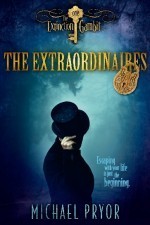
The full list of Notable Books is here.
March 29, 2012
Writers’ Easter Eggs
It’s that time of the year and I started thinking off to one side, as I tend to.
I know that software engineers and game developers hide little surprises in their stuff all the time. They’re called Easter Eggs. Some are legendary. In the 1997 versions of Microsoft Office, a flight simulator and a pinball game were hidden in Excel and Word, and could only be revealed through an arcane series of keystrokes and commands. Cool. The Easter Egg Archive has a huge repository of these, not only in software, but on DVDs, in music, and in movies. But don’t go there yet. Finish reading my post first.
I maintain writers have been doing this forever. We include little in-jokes and references all the time, inconsequential nods that will only make sense to a few. The great bulk of readership won’t get them, or even notice them, but we have a feeling of glee at their inclusion and the thought that somewhere, someday, someone will read that particular sentence and will squee. Loudly. Possibly drop the book, then have to pick it up again before squeeing some more.
It’s more than an easter egg. It’s a time bomb of the nicest sort just lying in wait. It may never go off, but when it does …
Over the course of writing thirty-odd books, I’ve had plenty of time to indulge in this. I’ve dropped in references that my family will get, I’ve used slightly disguised names of schools I’ve spoken at, I’ve had cameo appearances by pets of friends, I’ve used street names based on places I’ve lived and I’ve popped in details that avid readers of my blog will recognise and chuckle at. I’ve referenced clothes that a privileged few will recognise. I’ve mentioned meals I’ve prepared for friends. I’ve dropped in little out of context quotes from favourite movies. I’ve featured significant turns of phrase and those in the know will understand just who I’m poking fun at …
Writer’s Easter Eggs. They’re in just about every book you read. It’s a game, and adds to the fun of the reading experience.
Writers' Easter Eggs
It's that time of the year and I started thinking off to one side, as I tend to.
I know that software engineers and game developers hide little surprises in their stuff all the time. They're called Easter Eggs. Some are legendary. In the 1997 versions of Microsoft Office, a flight simulator and a pinball game were hidden in Excel and Word, and could only be revealed through an arcane series of keystrokes and commands. Cool. The Easter Egg Archive has a huge repository of these, not only in software, but on DVDs, in music, and in movies. But don't go there yet. Finish reading my post first.
I maintain writers have been doing this forever. We include little in-jokes and references all the time, inconsequential nods that will only make sense to a few. The great bulk of readership won't get them, or even notice them, but we have a feeling of glee at their inclusion and the thought that somewhere, someday, someone will read that particular sentence and will squee. Loudly. Possibly drop the book, then have to pick it up again before squeeing some more.
It's more than an easter egg. It's a time bomb of the nicest sort just lying in wait. It may never go off, but when it does …
Over the course of writing thirty-odd books, I've had plenty of time to indulge in this. I've dropped in references that my family will get, I've used slightly disguised names of schools I've spoken at, I've had cameo appearances by pets of friends, I've used street names based on places I've lived and I've popped in details that avid readers of my blog will recognise and chuckle at. I've referenced clothes that a privileged few will recognise. I've mentioned meals I've prepared for friends. I've dropped in little out of context quotes from favourite movies. I've featured significant turns of phrase and those in the know will understand just who I'm poking fun at …
Writer's Easter Eggs. They're in just about every book you read. It's a game, and adds to the fun of the reading experience.
March 28, 2012
Writers Write: My Favourite Book 20
Kate Bush made 'Wuthering Heights' required reading for every teenager worth her salt back in my day (it occurs to me that if I could get Kimbra and Goyte to write a song called 'Beatle Meets Destiny' or 'The Reluctant Hallelujah' – it'd up my sales hugely. Note to self: call their agents).
I loved 'Wuthering Heights' and felt very grown-up reading it but think it was probably a bit too sophisticated for me back in those days. I couldn't understand why everyone was so bad-tempered all the time, and it seemed to me that if there was a lot less hand-wringing, and a lot more slow-mo cartwheels and hair-flinging (a la Kate Bush ) everyone would be infinitely happier. Plus, I remember feeling ripped off that nowhere in the book does Cathy wail 'Heathcliff, it's me, it's Cathy, I've come home, and I'm so co-o-o-old, let me in-a your window-o-o-o.' It was a bit like discovering Humphrey Bogart never said, 'Play it again Sam,' and Clarke Gable never said, 'Frankly my dear, I don't give a damn'. Just didn't seem right.
But I recently revisited it and was stunned by how completely and utterly dark Heathcliff was, and how brilliant the story was. You'd be hard-pressed to find a more monstrous character than Heathcliff, but the great thing about him – the clever thing that Emily Bronte did – was she made you feel very ambivalent about his blackness. His bad behavior was completely repellent, and he spent so much of his time and energy having his revenge, but you could sort of see exactly why he was like that. They say that authors were the early psychiatrists, and Emily Bronte provides a fascinating, complex, sophisticated character study in 'Wuthering Heights'.
'Wuthering Heights' reminds me of a Nick Cave ballad inside the pages of a book. It's one of the coolest books I've ever read, and the fact that it was written so long ago is just incredible.
And now … Kimbra? Gotye? My song?
Gabrielle's latest book is 'The Reluctant Hallelujah' (Penguin 2012).
March 23, 2012
I Want the Moon Back
I've been re-watching the 1998 HBO series 'From the Earth to the Moon', and it got me thinking.
We went to the moon. Can you get your head around that? We, collectively, as a species, went to the moon. That moon, the one way up there – we went to it. We went right around the other side. We trod on its dusty surface. We picked up rocks. We measured stuff. WE DROVE A FREAKIN' DUNE BUGGY ALL OVER THE PLACE!
We went to the moon.
Yes, we all know that, but I'm not sure if we appreciate it, or appreciate it enough. What an effort. What an achievement. What a batty, glorious, arrogant thing it was even to conceive of. 'Okay, the moon. Let's go there to see what it's like.' It's one of the great things about humanity, this ability to undertake something vast, futile and poetic, just because.
We did it, and then we stopped. We haven't been back since 1972.
I know, I know. It was expensive. It could have been done by robots. It was pointless and there's so many better things to do down here. Maybe. I'm not going to argue that if we didn't spend so much on wars and other stupid stuff we could be holidaying on the Sea of Tranquillity right now (even though I just did argue it), but I am going to say how sad it is that we aren't. If there ever was a species wide failure of imagination or commitment or confidence, it's the fact that we stopped going to the moon. We could have said, 'Let's do everything else, but let's keep going to the moon.' Instead, we withdrew, turned back on ourselves and forgot about the high frontier.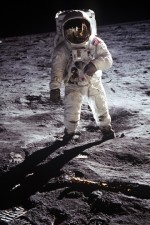
I, for one, would like to see us out there again. I'd like us to be doing stuff that pushes us to the boundaries of experience, things that enlarge us as human beings. Yes, we're doing amazing, magnificent, incredible things in biology, medicine and Large Hadron Colliders, but I'm greedy and I want more.
I want the moon back.
March 22, 2012
YA SF Day
I'll be appearing with George Ivanoff at Embiggen Books this Sunday at one o'clock. Come along for readings and signings and general author meetingness.
March 21, 2012
Writers Write: My Favourite Book 19
In a corner of a grade six classroom at Rathdowne Street State School in Carlton, two books sat all alone. The year was 1936. One was Undine by Friedrich de la Motte Fouqué. The other was Green Mansions by William Henry Hudson.
It was the magic captured on the pages of these two novels that, as a child, filled my mother's imagination. In her adult years, the story of Green Mansions haunted her. But she couldn't remember the title. She knew it was about a girl – a girl with a beautiful voice who lived in a forest. And about a handsome young man who fell in love with her. But that was all.
After twenty years of searching, Book Searchers in South Yarra, finally found a copy.
As a child I remember the spot on the bookshelf of my childhood home where Green Mansions sat. I have read it numerous times over the years and loved it.
It is the inspiration behind my new novel, The Wish Bird, still a work in progress but to be published in 2013.
In 1959, Green Mansions came out as a movie directed by Mel Ferrer, starring Audrey Hepburn and Anthony Perkins.
Gabrielle's latest books are part of the 'Our Australian Girl' Series published by Penguin Books Australia in 2011 – 'Meet Poppy', 'Poppy at Summerhill', 'Poppy and the Thief' and 'Poppy Comes Home'. Her award winning novel, 'The Garden of Empress Cassia' was published in the US by Kane Miller in 2011.
To learn more about Gabrielle's books visit her website at www.gabriellewang.com


